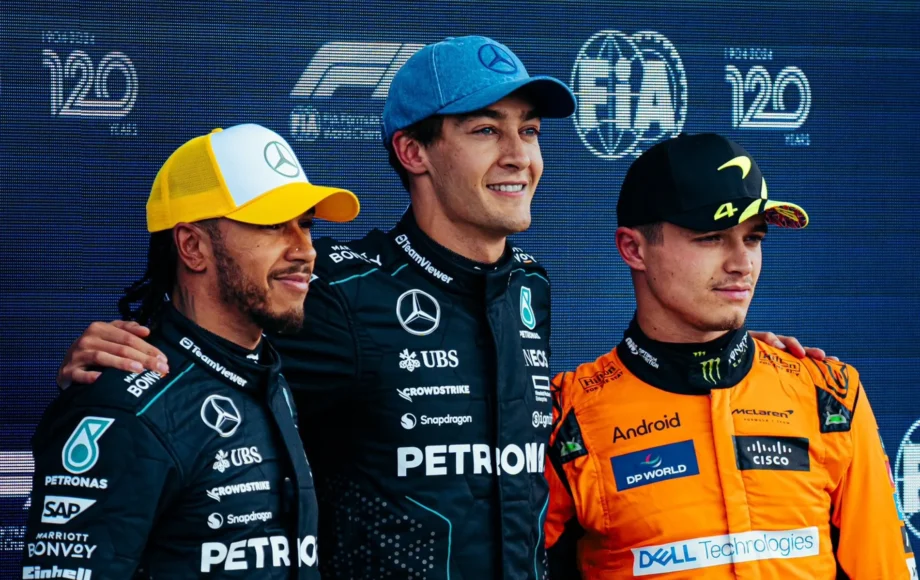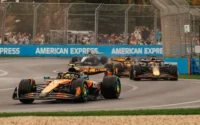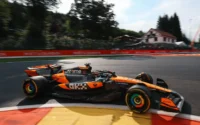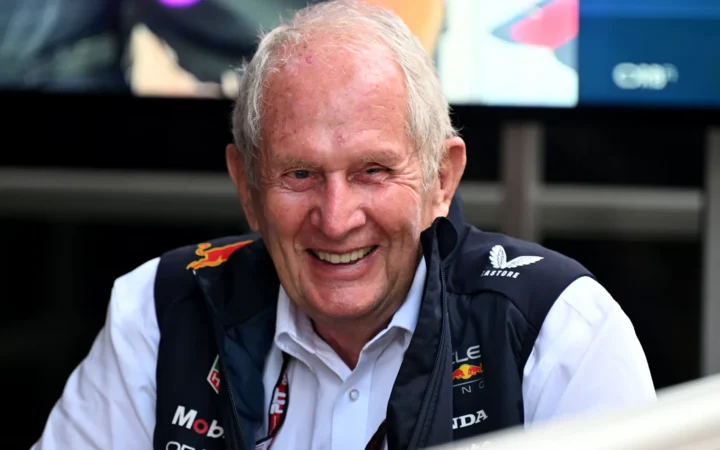In 2025, the end of the most recent regulations of a ground-effect era, qualifying became more competitive than ever, but when a team manages to secure both spots on the front row of the grid, it’s a clear sign of dominance. A front row lockout means one team has qualified first and second, locking out the top of the grid for Sunday’s race. And while it’s become increasingly rare outside of the top teams, a few constructors have made a habit of it across F1’s long history.
What To Know?
- Mercedes (82) – Dominated qualifying in the turbo-hybrid era with Hamilton and Rosberg/Bottas.
- McLaren (70) – Recently leapfrogging Ferrari thanks to a 2025 resurgence with Norris and Piastri, the latest came at the 2025 Qatar GP
- Ferrari (68) – Longstanding F1 giant with lockouts across multiple golden eras.
- Williams (62) – Ruled the 80s and 90s with powerful cars and legendary drivers.
- Red Bull (28) – Rapid but inconsistent in qualifying; Verstappen leads most recent efforts.
The physical layout of the grid has changed over the decades. Prior to 1973, the front row sometimes consisted of three or even four cars, depending on the circuit. Since then, the standard two-by-two formation has defined what we now call a front-row lockout, and some teams have absolutely mastered the art.
Alongside the teams with the most 1-2 finishes, we look at which constructor has had the most front row lockouts in F1 history.
Formula One History Recommends
F1 teams with the most front-row lockouts
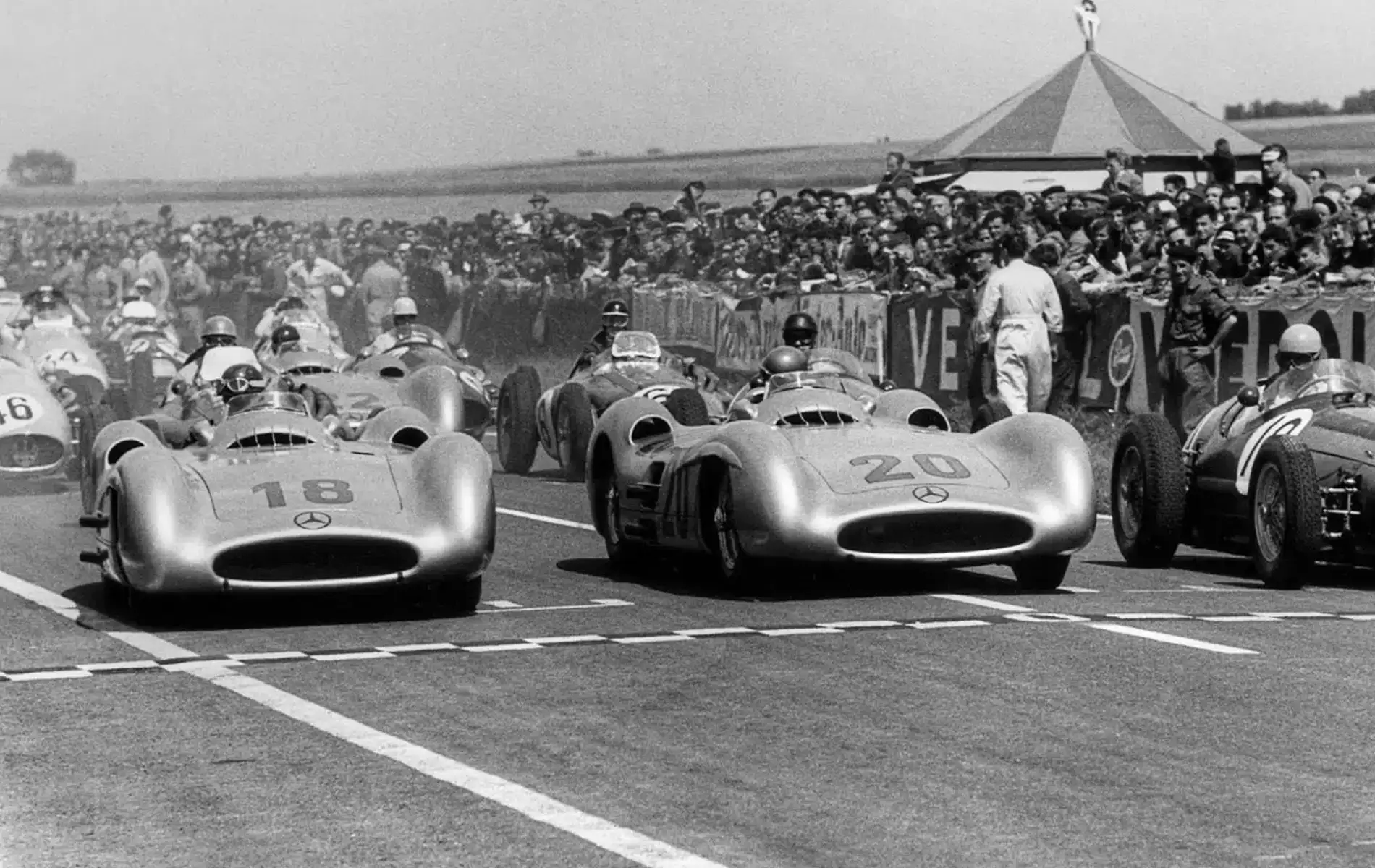
Mercedes: 82 Front-Row Lockouts
Mercedes tops the all-time leaderboard for front row lockouts, with an astonishing 82 to their name — most of which were achieved during their turbo-hybrid era dominance from 2014 to 2020. With Lewis Hamilton and Nico Rosberg (and later Valtteri Bottas), the Silver Arrows routinely locked out the front row, often by dominant margins. In 2015 alone, Mercedes secured 15 front-row lockouts in 19 races, a record for a single season.
Even as competition tightened, Mercedes remained a Saturday force. But since 2021, front-row appearances have become far more sporadic, with Red Bull and McLaren taking over as the most frequent visitors to the front of the grid.

McLaren: 70 Front-Row Lockouts
McLaren and their qualifying pedigree has been legendary, and in 2025, they reminded the world why. At the 2025 Australian Grand Prix, Lando Norris and Oscar Piastri locked out the front row for McLaren’s 66th front-row sweep — and their first in Melbourne since 2012, when Jenson Button won from P2.
Halfway through the season, McLaren did it again at Spa for the 2025 Belgian Grand Prix, with Norris grabbing pole and Piastri alongside him. That moment was McLaren’s 68th front row lockout, tying them with Ferrari for second place in the all-time standings. It was also McLaren’s 12th pole at Spa — just one shy of Ferrari’s record at the circuit. Then came the 2025 Dutch Grand Prix, and McLaren leapfrogged Ferrari into P2 in the all-time list of most front-row lockouts. Their latest came at the 2025 Qatar GP, taking the tally to 70.
Full Race Weekend Reports
After years in the midfield, McLaren’s 2024 Constructors’ Championship and strong 2025 qualifying form showed they were well and truly back among F1’s elite.
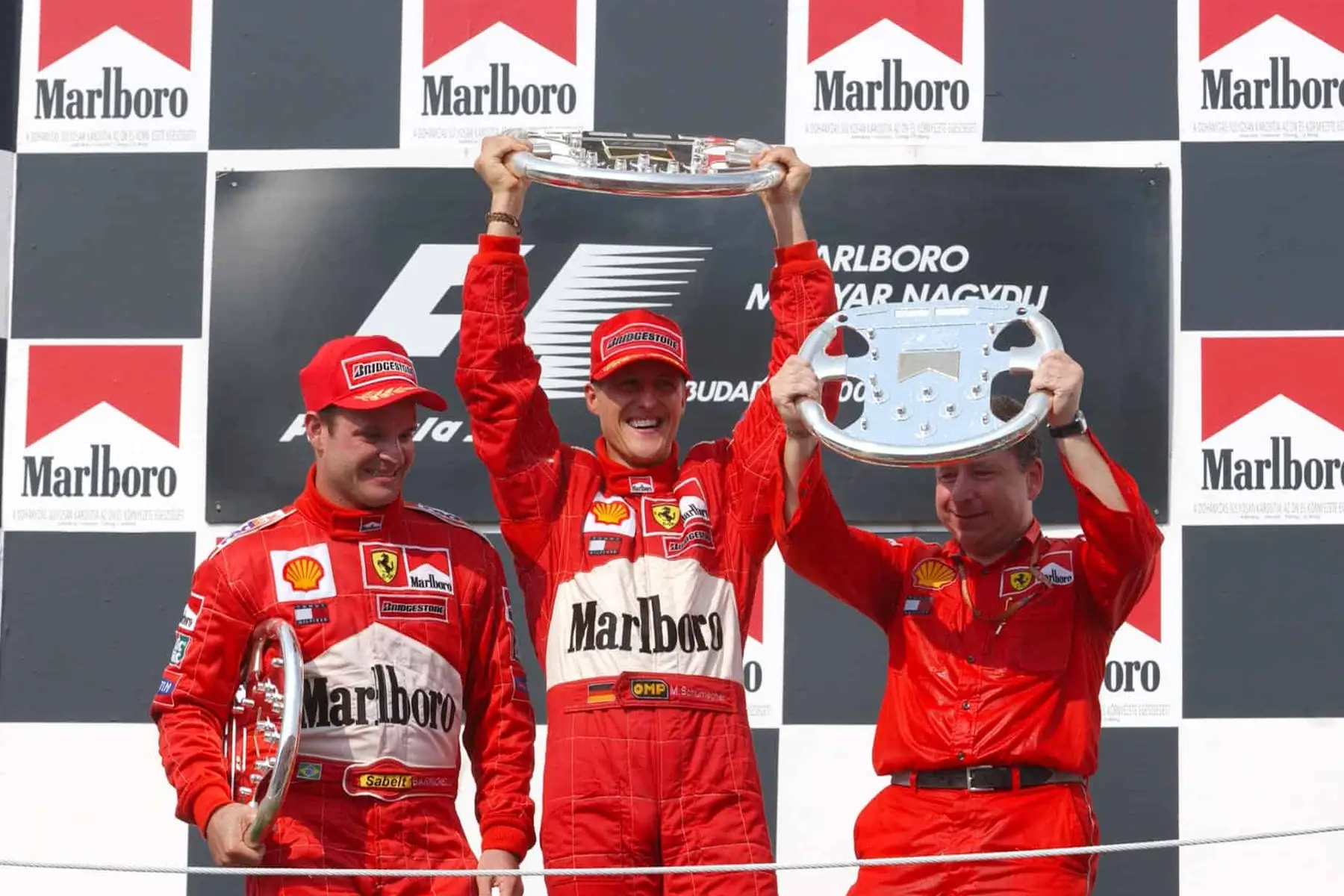
Ferrari: 68 Front-Row Lockouts
Ferrari sits tied for second on the all-time list with 68 front-row lockouts, though many of them came during their most dominant periods in the 1950s, early 2000s, and brief revivals in the 2010s. The Michael Schumacher–Rubens Barrichello era was particularly fruitful, and the team’s resurgence with Sebastian Vettel also delivered several more lockouts.
While the Scuderia has struggled for consistent form in recent seasons, they’ve remained a threat in qualifying on high-speed circuits — though as of 2025, they’ve yet to match McLaren’s recent momentum in this department.

Williams: 62 Front-Row Lockouts
Williams sit just behind with 62 front row lockouts — most of them coming during their dominant runs in the 1980s and 1990s. Drivers like Nigel Mansell, Nelson Piquet, Damon Hill, and Jacques Villeneuve helped Williams become a qualifying powerhouse. The FW14B and FW18 were especially dominant in Saturday sessions.
While front-row lockouts are now a distant memory for Williams — the last one coming in the early 2000s — new leadership under James Vowles and the arrival of Carlos Sainz in 2025 brought new optimism that the team could eventually return to the sharp end of the grid.
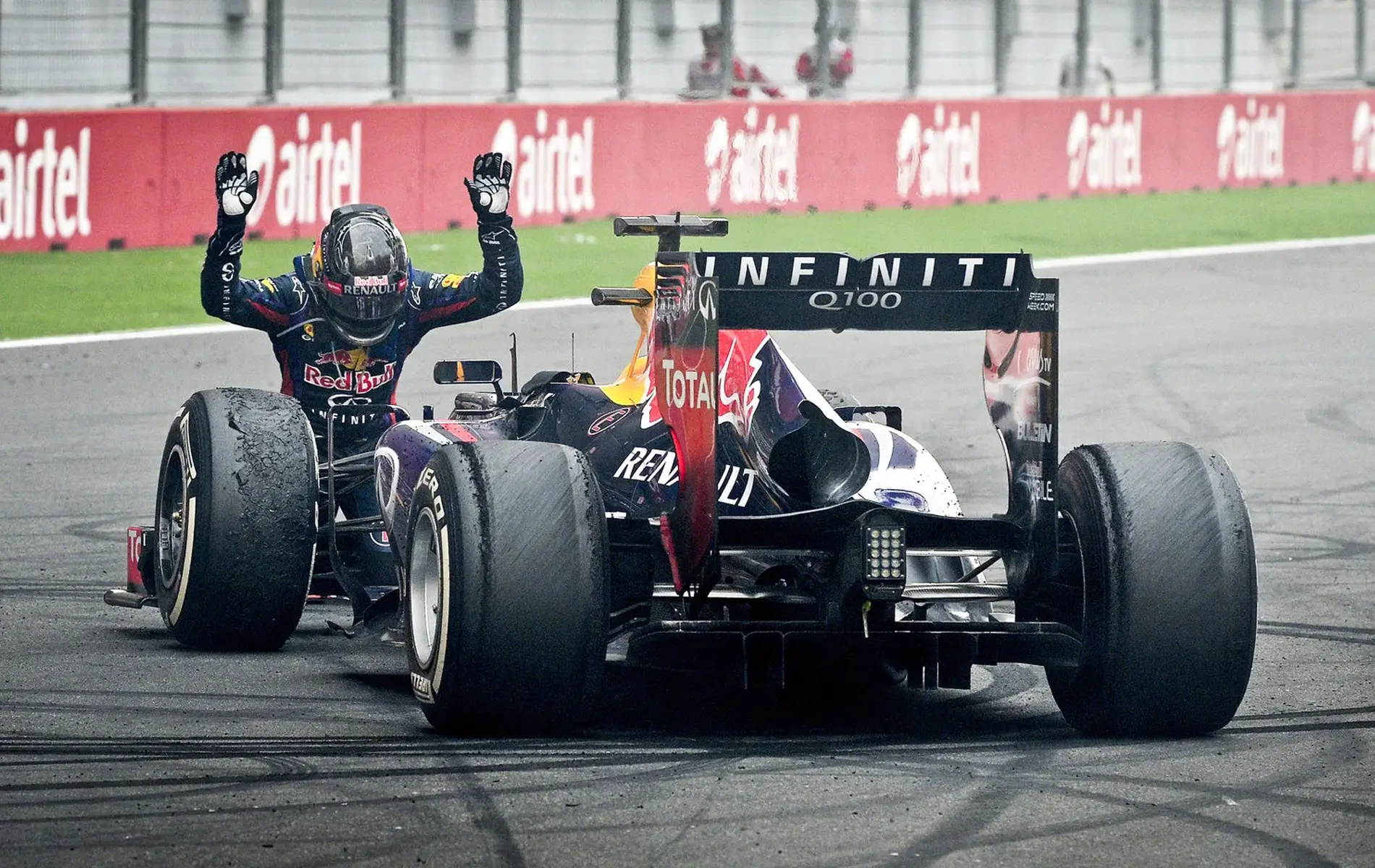
Red Bull Racing: 28 Front-Row Lockouts
Red Bull Racing, despite their dominance in the modern era, has only recorded 28 front-row lockouts. That’s partly due to the team’s occasional struggles in qualifying — especially during their early 2010s run, when Sebastian Vettel often outpaced Mark Webber — and more recently, to the inconsistency of number two drivers, such as Sergio Perez, alongside Max Verstappen.
Still, Red Bull remains one of the strongest qualifying teams on the grid, considering how young a team they are in comparison to historic teams ahead of them, especially with Verstappen’s one-lap mastery. If their number two driver(s) regain consistent Saturday form, Red Bull’s lockout count could rise quickly.
Which Other F1 Teams Have the Most Front-Row Lockouts?
While the top five teams dominate the headlines when it comes to front-row lockouts, several other constructors have had their moments of brilliance in qualifying throughout Formula 1 history. From pioneering innovators to underdog surprises, these teams may not top the all-time charts, but their competitive Saturdays are no less impressive.
Renault takes sixth place on the all-time front-row lockout list with 22 — a reflection of its two distinct eras as both a constructor and engine supplier. The French manufacturer made waves in the late 1970s and early 1980s by pioneering turbocharged engines, with standout front-row performances in the hands of Jean-Pierre Jabouille and René Arnoux. Renault’s bright yellow cars were often blindingly quick over a single lap, even if reliability issues sometimes hindered race-day results. The team’s second golden era came in the mid-2000s, when Fernando Alonso led the charge to back-to-back world titles in 2005 and 2006, occasionally delivering front-row lockouts with teammate Giancarlo Fisichella. Although Renault has since rebranded as Alpine, its place in qualifying history remains amongst the best.
Lotus, one of F1’s most iconic teams, recorded 9 front-row lockouts — mostly during the golden age of the 1960s and 70s. Under Colin Chapman’s innovative leadership, Lotus consistently pushed technical boundaries. The combination of Jim Clark’s brilliance and revolutionary car design gave the team regular front-row pace, while later drivers like Mario Andretti and Ronnie Peterson added to the tally in the ground-effect era of the late 70s. Ligier, meanwhile, had a shorter but notable spell of success. Operating under both the Ligier and Talbot Ligier banners, the French outfit secured 5 front-row lockouts during the late 1970s and early 80s, often with Jacques Laffite leading the charge. While neither team remains in F1 today, their qualifying history is fondly remembered amongst older fans.
Though they only managed 4 front-row lockouts each, both Alfa Romeo and Brabham left meaningful marks on F1’s early and middle eras. Alfa Romeo dominated the very first years of Formula 1 in the early 1950s, with drivers like Giuseppe Farina and Juan Manuel Fangio delivering 1-2 starts when the front row occasionally featured three or more cars. While Brabham, founded by driver Jack Brabham, had more sustained success during the 1960s and 70s. The team achieved its front-row lockouts in periods of strong form, particularly when they paired innovative engineering — like the infamous fan car.
| Position | Constructor | Number |
|---|---|---|
| 1 | Mercedes | 82 |
| 2 | McLaren | 70 |
| 3 | Ferrari | 68 |
| 4 | Williams | 62 |
| 5 | Red Bull Racing | 28 |
| 6 | Renault | 22 |
| 7 | Team Lotus | 9 |
| 8 | Ligier / Talbot Ligier | 5 |
| 9 | Alfa Romeo | 4 |
| 9 | Brabham | 4 |
F1 teams with the most 1-2s in history
Formula 1 has long been defined by dynasties, with teams like Mercedes (2014–2021), Ferrari (early 2000s), McLaren, and Williams dominating entire eras and racking up numerous 1-2 team finishes — races where both team drivers finish first and second. While these periods were sustained successes, underdog moments like Jordan’s shock 1-2 at the 1998 Belgian Grand Prix also etched themselves into F1 history. In 2025, McLaren marked a major milestone by achieving their 50th 1-2 finish at the 2025 Chinese Grand Prix, highlighting the legacy of the team’s dominance even in an era centred on Red Bull and Verstappen.

